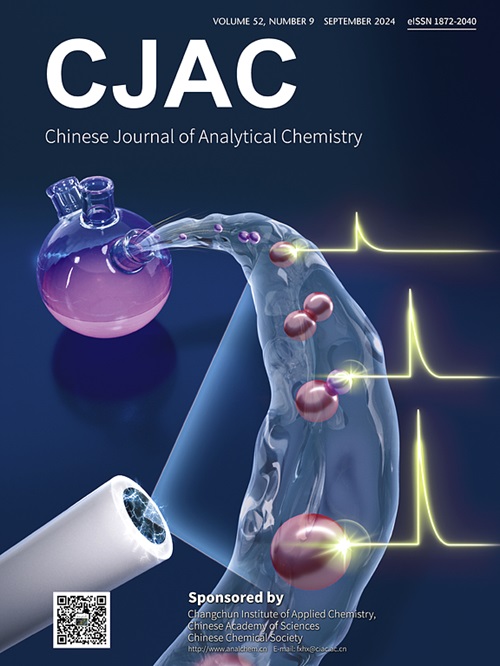碳纤维微电极在去离子水中的电化学表面改性与再生
IF 1.3
4区 化学
Q4 CHEMISTRY, ANALYTICAL
引用次数: 0
摘要
检测电极的污染、钝化或污垢是一个严重的问题,会破坏电分析设备的分析性能。本文首次提出了一种简单有效的碳纤维微电极(CFME)更新方法。CFME在去离子水中以1.75 V的初始电位预处理26.13 min,得到对多巴胺电化学反应显著增强的活化电极。该方法可以恢复失活CFME的电化学性能。该方法的一个优点是,尽管去离子水不含任何其他电解质,但其对电极的激活和再生效果不低于其他报道的激活溶液。我们的研究进一步了解了CFME在去离子水中电化学处理后的活化机理,这归因于电化学处理后碳纤维表面的更新。同时证明了在活化的CFME表面修饰含氧官能团,使CFME的电化学活性表面再生,提高了CFME的灵敏度。在1.0 × 10−7 ~ 1.0 × 10−4 mol/L范围内,多巴胺对再生CFME的差分脉冲伏安(DPV)响应呈良好的线性关系(R2 = 0.9961)。检出限低至3.1 × 10-8 mol/L。再生CFME稳定性好,重现性好。它有望应用于复杂生物微环境监测中被污染的电极的激活和再生。本文章由计算机程序翻译,如有差异,请以英文原文为准。

Electrochemical surface modification and regeneration of carbon fiber microelectrodes in deionized water
The contamination, passivation, or fouling of the detection electrodes is a serious problem undermining the analytical performance of electroanalytical devices. In this paper, a simple and effective carbon fiber microelectrodes (CFME) renewal method was proposed for the first time. CFME was pretreated with an initial potential of 1.75 V in deionized water for 26.13 min to obtain an activated electrode with a significantly increased electrochemical response to dopamine. This method can restore the electrochemical performance of the inactivated CFME. An advantage of this method is that its activation and regeneration effect on the electrode was not less than the other reported activation solutions, although deionized water does not contain any other electrolyte. Our study furthered the understanding of the activation mechanism of CFME treated electrochemically in deionized water, this was ascribed to a renewing in the surface of carbon fibers after electrochemical treatment. At the same time, it was proved that the oxygen-containing functional groups were modified on the surface of activated CFME, which led to the regeneration of an electrochemically active surface and improved CFME sensitivity. The differential pulse voltammetry (DPV) response of dopamine showed good linearity (R2 = 0.9961) on the regenerated CFME in the concentration range from 1.0 × 10−7 to 1.0 × 10−4 mol/L. A limit of detection as low as 3.1 × 10–8 mol/L was found. The regenerated CFME was quite stable and had good reproducibility. It is expected to be applied to activate and regenerate electrodes contaminated in the monitoring of a complex biological microenvironment.
求助全文
通过发布文献求助,成功后即可免费获取论文全文。
去求助
来源期刊
CiteScore
3.60
自引率
25.00%
发文量
17223
审稿时长
35 days
期刊介绍:
Chinese Journal of Analytical Chemistry(CJAC) is an academic journal of analytical chemistry established in 1972 and sponsored by the Chinese Chemical Society and Changchun Institute of Applied Chemistry, Chinese Academy of Sciences. Its objectives are to report the original scientific research achievements and review the recent development of analytical chemistry in all areas. The journal sets up 5 columns including Research Papers, Research Notes, Experimental Technique and Instrument, Review and Progress and Summary Accounts. The journal published monthly in Chinese language. A detailed abstract, keywords and the titles of figures and tables are provided in English, except column of Summary Accounts. Prof. Wang Erkang, an outstanding analytical chemist, academician of Chinese Academy of Sciences & Third World Academy of Sciences, holds the post of the Editor-in-chief.

 求助内容:
求助内容: 应助结果提醒方式:
应助结果提醒方式:


